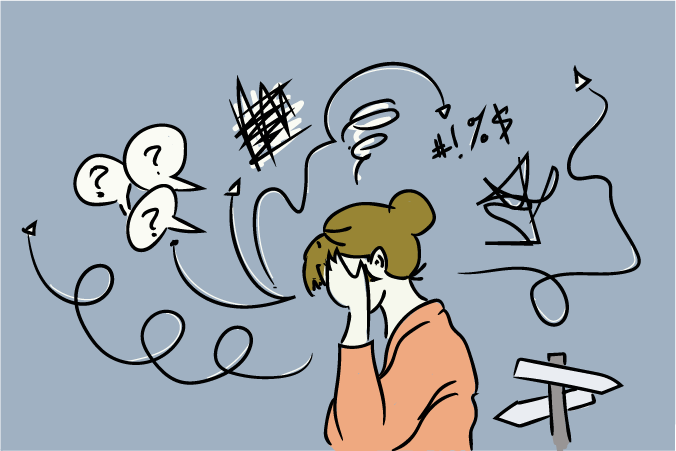We don’t really need a reason to feel anxious these days. It’s just like the leaves starting to fall from the trees – it just seems to be in the air, everywhere. You also may have feelings of tension that arise as you are getting ready for a big event or competition. These performance jitters might start days in advance or just before the event. Take a moment and think about an event, either in the recent past or upcoming, that makes you feel tense or nervous. Take a moment to sit with it and notice what it feels like. Where do you feel it? What is the level of intensity? Does your tension always show up the same way in your body? For some people, they lose their appetite or feel nauseous. Others may feel their jaw or other muscle tighten up. Still others may feel their breath and heartrate quicken and they feel warm. Take a moment to think about your unique pattern of tension.
When we encounter unpleasant sensations in our bodies, we often respond with anxiety (what is wrong with me?) and proceed to tense our muscles and our breath in response to the sensation. It is a natural response – part of our survival mechanism – as the body gears up to protect itself from harm. However, the problem occurs when we continue to hold onto the tension even when there is no proverbial tiger chasing us. As an athlete or performer, the way we interpret these feelings of tension can affect our performance. Athletes who perceives the anxious feelings as a threat tend to experience more negative impacts on performance, while those who interpret the feelings as excitement tend to feel more confident and perform better.
Mindfulness offers a different way to exist with our tension. This mindfulness approach is commonly used in an iRest Yoga Nidra session. Next time you notice tension arising in your body, try this mindful approach:
Rather than responding to feelings of stress with even more tension, we can respond to the sensations with curiosity and openness. What is the sensation that is present? What are its qualities, its color, its location? Without resisting it – by trying to immediately get rid of it – we can create a space to open and relax around it. Liken it to sitting down to visit with a friend in need. Rather than immediately rushing in to solve their problems, we lean back, open our arms, and listen without judgement. In the same way, when we feel an uncomfortable sensation or feeling arise, we can take a breath and pause, go within, and listen. We can relax and be present with ourselves without judgement or the need to fix. Remaining present with the sensations as they arise will remind us of their impermanence. Often within a few breaths, the sensation or feelings begin to change.
5 steps to tension transformation
- Notice the sensation. Breathe, pause and go within, noticing the ever-changing quality and complexity of sensations within you. Be curious. Be open.
- Relax around the sensation and notice what co-arises with it. Sometimes, by simply noticing it, the sensations begin to lessen.
- Welcome any thoughts or emotions that accompany the sensations. You might notice judgements, fears, and urges (maybe an urge to run), among others. Again, be open without the need to judge or change.
- Let the “right action” present itself to you. What do you need to do right now to help ground yourself?
- pausing, breathing and relaxing for a few breaths
- visualize a place that makes you feel happy or grateful
- journal about it
- take a walk or get outside
- Be willing to practice! Just like you wouldn’t expect to master a skill on the first go, learning to calm yourself also takes time.
If you would like to learn more about mindfulness, or about how iRest Yoga Nidra meditation can help you process difficult emotions, reach out to me!


